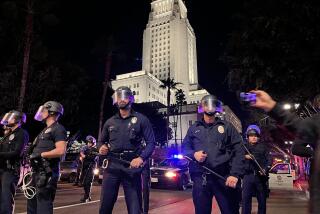Two top talent agents testify at Pellicano trial
- Share via
Two of Hollywood’s most powerful talent agents, Bryan Lourd and Kevin Huvane, breezed into the trial of private detective Anthony Pellicano on Wednesday for barely 10 minutes total of testimony.
“This is going to be boring,” Lourd quipped to reporters in the hallway outside the courtroom before his five minutes on the stand.
In a way, he was right. Prosecutors in the federal government’s case allege that Pellicano -- charged with wiretapping and racketeering among other crimes -- had a Los Angeles Police Department sergeant, Mark Arneson, make an unauthorized check of the Department of Motor Vehicles records of Lourd and Huvane, two of the managing directors of Creative Artists Agency in 2001.
Mainly, prosecutors asked Huvane and Lourd to look at documents generated by the alleged checks of DMV records and seized from Pellicano’s office and confirm that they were seeing their actual Social Security numbers and driver’s license numbers.
The biggest surprise may have been the revelation that Lourd had as modest a vehicle as a Ford registered in his name at the time.
Huvane also confirmed, under questioning from prosecutor Kevin Lally, that during that period, he and Lourd were in a business dispute with their former boss, Michael Ovitz, who had started a rival talent management company. Ovitz had hired Pellicano at the time.
But despite Lourd’s protestations otherwise, the presence of the two middle-aged Turks, dapper and good-humored, was a relief for courtroom observers who had just sat through more than four hours of laborious questioning of software engineer Jeffrey Edwards.
A former FBI agent who has endured a marathon on the stand since Tuesday afternoon, Edwards broke the code that locked and encrypted Pellicano’s computer audio files, which the government alleges is the lucre of illegal wiretaps.
Edwards said he discovered that the files were protected by the pass code “office -- 322 -- omerta.” Omerta is the Sicilian word for “code of silence.” But, he testified, it took more than that to get access to the computer. It took an elaborate keyboard dance of three simultaneous strikes and swiftly typing another code word to unlock the system.
Even more, the computer system sensed if someone was stumbling around the keyboard trying to get in. “It would keep track of bad mouse events,” Edwards said.
He said “15 bad key presses in any time period” would trigger a program to wipe out the audio files.
--
More to Read
Sign up for Essential California
The most important California stories and recommendations in your inbox every morning.
You may occasionally receive promotional content from the Los Angeles Times.











